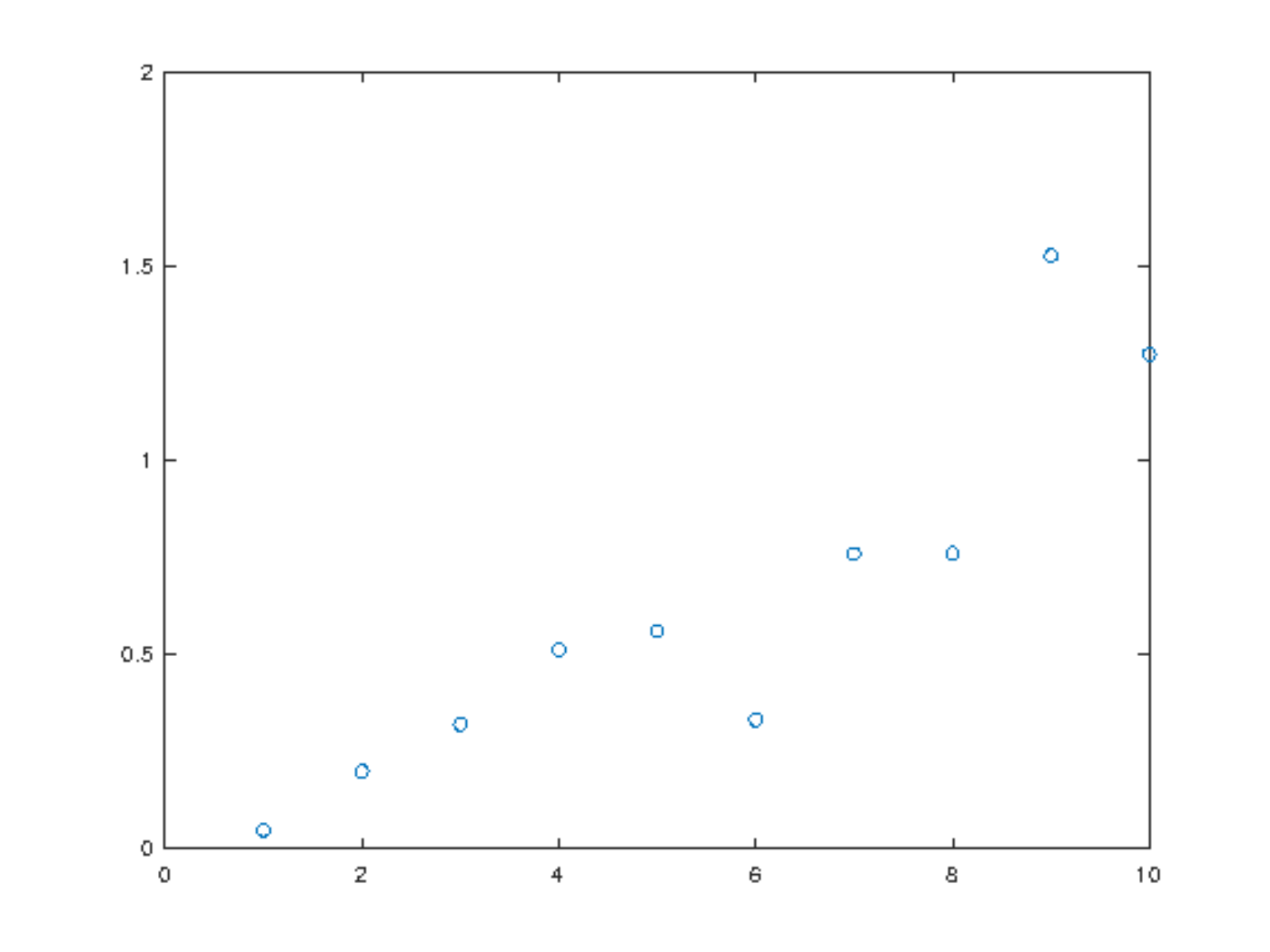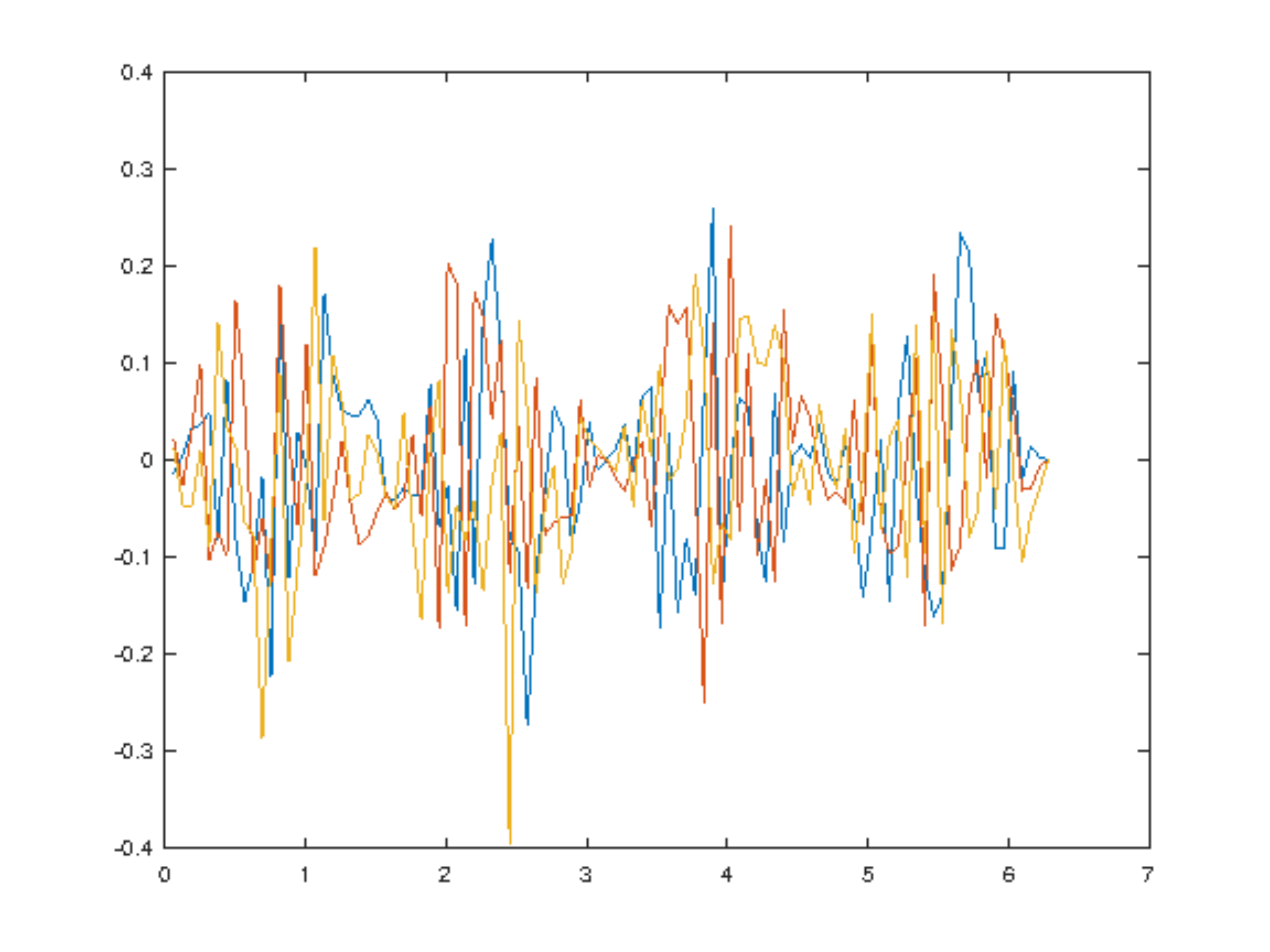MATH347: Linear algebra for applications in data scienceJune 4, 2021
Final Examination:
Application
Solve the following problems (5 course points each). Present a brief
motivation of your method of solution. This is an open-book test, and
you are free to consult the textbook. Your submission must however
reflect your individual effort with no aid from any other person.
Draft your solution in TeXmacs in this file. Spaces for your solution
have been provided in this file for text, formulas, figures, Octave
commands. If Octave does not work within TeXmacs, verify your commands
in the stand-alone Octave application and paste the commands into the
appropriate spaces in this file without executing them. Upload your
answer into Sakai both as a TeXmacs, and pdf. Allow at least 10
minutes before the submission cut-off time to ensure you can upload
your file.
Problem 1
Data can be represented in multiple ways.
The course desribed the least squares solution to representing the data
as a polynomial, for instance a quadratic polynomial
the coefficients of which are found by solving
|
(1) |
Notice that is a linear combination of with scaling coefficients ,
and recall that .
-
Consider another representation of the data as a trigonometric
polynomial . State
the least squares problem by modifying (1) to reflect the new
representation.
Solution. The columns of
change
|
(2) |
-
For ,
for ,
arbitrarily choose some values for ,
and construct data vectors
in Octave.
Solution.
octave] |
m=100; t=2*pi*(1:m)'/m; |
octave] |
a0=-0.5; a1=0.5; a2=1.0; aEX=[a0; a1; a2]; |
octave] |
x=a0+a1*sin(t)+a2*cos(t); |
-
Solve in Octave the least squares problem you stated in point 1. Do
you recover the coefficients
you chose?
octave] |
A=[t.^0 sin(t) cos(t)]; |
octave] |
[Q,R]=qr(A,0); b=Q'*x; aLS=R\b; aLS' |
ans =
-0.50000 0.50000 1.00000
Coefficients are exactly recovered.
-
Perturb the data to mimic measurement noise ,
where is a vector of random
numbers in the interval scaled by .
Solve the least squares problem for the new, noisy data to obtain
the perturbed coefficients .
octave] |
y = x + 2*(rand(m,1)-0.5); |
octave] |
b=Q'*y; aLS=R\b; aLS' |
ans =
-0.34031 0.50169 1.04731
-
Write an Octave loop over the scaling coefficient values
with ,
and compute the norm of the change in the coefficients for each
value. Construct a plot of and comment on the effect of the
magnitude of the noise as measured by
upon recovery of the exact coefficients
octave] |
n=10; err=zeros(n,1);
for s=1:n
y = x + 2*s*(rand(m,1)-0.5);
b=Q'*y; aLS=R\b;
err(s) = norm(aLS-aEX);
end |
octave] |
plot(1:n,err,'o') |
octave] |
cd ~/courses/MATH347DS; print -depsc 'errplot.eps' |
 |
|
Figure 1. Error grows with
|
Problem 2
Continuing the above, suppose the measurement noise is modulated in
time,
|
(3) |
Investigate now the utility of the singular value decomposition to gain
insight into the data.
-
Construct a data matrix of the modulated noise measurements
specified in formula (3)
octave] |
n=10; Y = zeros(m,n); err=zeros(n,1);
for s=1:n
y = x + s*2*(rand(m,1)-0.5).*sin(t) + 4*s*2*(rand(m,1)-0.5).*sin(2*t);
Y(:,s) = y;
end |
-
Compute the mean of the measurements ,
and construct the centered data matrix
octave] |
yAV = mean(Y')'; size(yAV) |
-
Compute the first 3 singular vectors of
using the svds Octave function.
octave] |
[U S V]=svds(Y0,3); |
-
The largest 10 singular values are found through the instruction sigma=svds(Y,10,'L'). Display these values and comment
on your observations.
octave] |
sigma=svds(Y,10,'L')' |
sigma =
Columns 1 through 8:
189.757 161.290 139.115 115.779 96.063 84.466
64.798 48.051
Columns 9 and 10:
31.548 16.625
Singular values decay quickly.
-
Plot the first 3 singular vectors. What features of the data is revealed by the dominant singular
vectors?
octave] |
plot(t,U(:,1),t,U(:,2),t,U(:,3)) |
octave] |
print -depsc 'uplot.eps' |
 |
|
Figure 2. The singular vectors capture the
noice modulation
|

